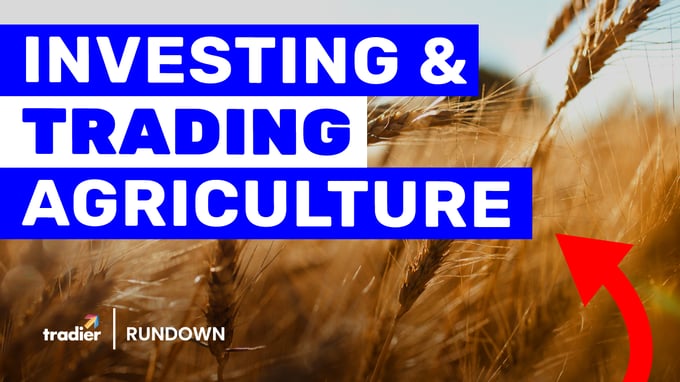
Agricultural commodities were a tale of three sectors in Q1. While grain and oilseed futures markets continued to decline, adding to the 2023 losses, the soft commodities and animal protein markets continued to soar, leading the raw materials asset class on the upside.
A composite of the grain and oilseed markets fell 7.56% in Q1 after declining 13.04% in 2023. Animal proteins posted a 19.01% first-quarter gain after edging 1.74% higher in 2023. The leader in 2023 and Q1 was soft commodities, gaining 24.04% last year and moving 35.1$ higher during the first three months of 2024.
In early April 2024, the grain and oilseed markets are moving into the 2024 planting season in the Northern Hemisphere’s crop year. Mother Nature’s weather is the critical factor that will determine the path of least resistance of the grain and oilseed futures that feed and increasingly power the world. A significant consideration is the ongoing war in Ukraine, as Russia and Ukraine comprise Europe’s breadbasket. The fertile soil in the region remains a battlefield, and the Black Sea Ports, a crucial logistical hub, is a warzone in spring 2024.
Grains and oilseeds decline in Q1
- Soybean futures fell 7.89% in Q1 to the $11.9150 per bushel level. Bean futures were slightly lower than the March closing level on April 7.
- Corn futures declined 6.21% in Q1 to $4.42 per bushel. At under $4.35 per bushel on April 7, corn continues to decline in early Q2.
- CBOT soft red winter wheat futures were 10.79% lower in 2024’s first quarter, settling at $5.6025 per bushel. The price was slightly higher on April 5.
- KCBT hard red winter wheat and MGE spring wheat futures fell 8.84% and 10.82%, respectively, in Q1.
- Oat futures declined 7.45% in Q1, while rough rice futures were 5.46% lower over the first three months of 2024.
Meats rally as the 2024 grilling season approaches
- Live cattle futures rose 9.79% in Q1 to the $1.85 per pound level. Live cattle were lower in early April.
- Feeder cattle futures posted an 11.17% gain in Q1 to $2.47125 per pound and declined as of April 7.
- In Q1, lean hog futures led the meats on the upside with a 36.08% gain, settling at the 92.50 cents per pound level. Hog prices were higher in early Q2.
Soft commodities remain on bullish fire
- World sugar futures gained 9.43% in Q1 to 22.52 cents per pound. Sugar was lower in early Q2.
- Arabica coffee futures edged 0.29% higher in Q1 to $1.8885 per pound and were higher than the Q1 closing level on April 7 at over $2.12 per pound.
- Cocoa futures were the best-performing commodity in Q1, posting a 132.75% gain, closing at $9,766 per ton after reaching over $10,000. In early Q2, cocoa reached a new record $10,324 per ton high before correcting below the $9,800 level.
- Cotton futures rose 12.81% in Q1 to 91.38 cents per pound. Cotton declined in early Q2 to 86.25 cents.
- FCOJ gained 20.20% in Q1 to $3.6325 per pound and was marginally lower in early Q2.
The ETF products that track grains, oilseeds, and sugar
- CORN tracks a portfolio of three CBOT corn futures contracts.
- SOYB tracks a portfolio of three CBOT soybean futures contracts.
- WEAT tracks a portfolio of three CBOT wheat futures contracts.
- CANE tracks a portfolio of three ICE world sugar futures contracts.
The meats and soft commodities are limited to the futures arena
- The only route for exposure to live cattle, feeder cattle, and lean hog prices is the CME futures and futures options contracts.
- While the CANE ETF tracks world sugar prices, the only route for exposure to Arabica coffee bean, cocoa, cotton, and FCOJ prices are the ICE futures and futures options contracts.
2023 and Q1 2024 provide contrasting price action in the agricultural commodities. The weather in critical growing regions will be the most significant factor for the path of least resistance of prices over the coming weeks and months. Meanwhile, global population growth of over 20 million per quarter means that producers must keep pace with the ever-increasing demand as inflationary pressures push production costs higher.
Thanks for reading, and stay tuned for the next edition of the Tradier Rundown!